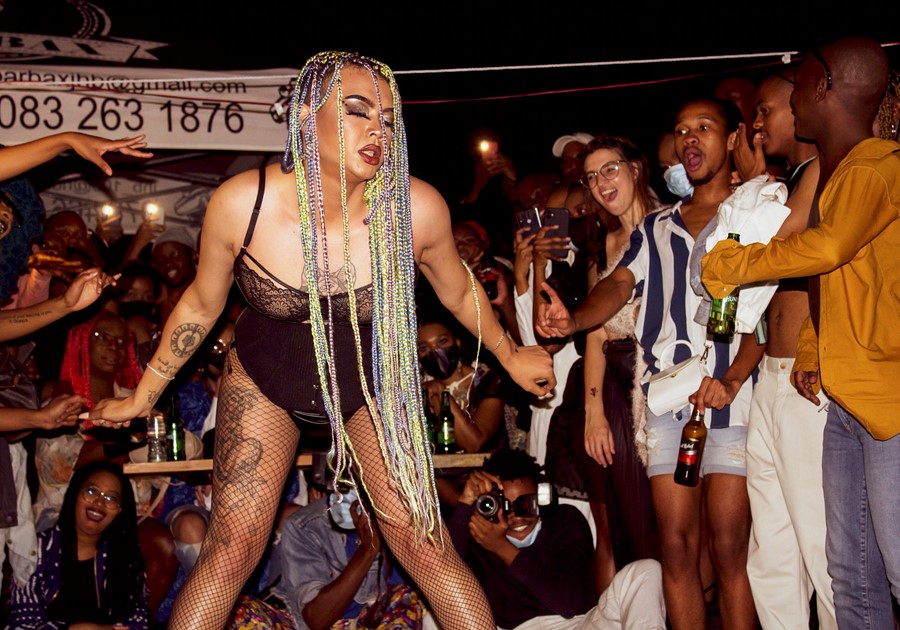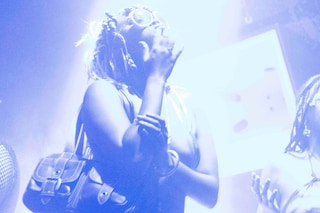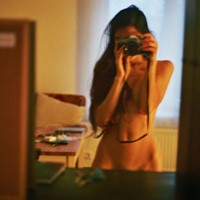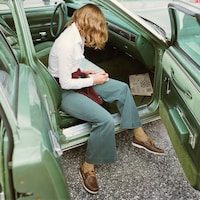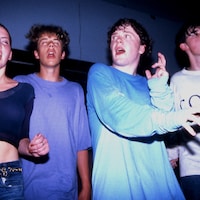Ahead of the opening of move/003, we speak to DJ and producer SHERELLE and co-curator Kobi Prempeh about celebrating the enduring legacy of Black and LGBTQIA+ rave culture at the Dazed Space
“Black and LGBTQ+ creatives haven’t just had an impact that defines the dance music scene, Black and LGBTQ+ creatives are the dance music scene,” Kobi Prempeh, founder and curator of fynn studio, tells Dazed in the run-up to their latest exhibition move/003 (opening in the Dazed Space on March 1). Created with DJ and producer (and Dazed 100 alum) Sherelle, the show celebrates the power and importance of Black and LGBTQ+ communities in rave culture. “When you and I talk about dance music – music that people dance to – it’s been born from the people of Black and queer communities. And that story has been whitewashed, misappropriated and diluted time and time again,” explains Prempeh. Featuring photography from names such as Imaani Iris and DeLovie Kwagala and recorded conversations from Loraine James and Nia Archives, the show traces a story “that isn’t so much of a history lesson, but an experiential and artistic expression of a movement”.
Sherelle tells Dazed that the exhibition is an “unadulterated celebration of some of the most special people within our scene... Especially in a time where progress seems to be going back a little. It’s been a joy put on this show with fynn studio who share the same ethos of trying to uplift community and provide resources in which can do so also. That’s the thing that makes us the most proud.”
The exhibition is split into nine different zones, each engaging with a different aspect of the club experience. “Discussing the lineage of rave through to soundsystem culture and its influence on DJs like Fabio and Grooverider, we began developing what a non-linear, conceptual exhibition could look like,” Prempeh tells us. “move/003 [focuses] on the DJs that were released on Sherelle’s first BEAUTIFUL label compilation. By working with Sherelle, we can give an authentic voice to rave exhibitions in a way that others just can’t and don’t do.”
“We also felt it was important to have the exhibition at 180 because it’s just a really cool space,” Sherelle adds. “It made us very sure that we wanted people whose stories were big enough to be in there, through their presence and their amazing work. This is [going to be] one of the most important and beautiful shows around... We have really talented people who deserve their flowers all the time. All artists are both pioneers or cultural changemakers.”
“When you and I talk about dance music – music that people dance to – it’s been born from the people of Black and queer communities. And that story has been whitewashed, misappropriated and diluted time and time again” – Kobi Prempeh
When it came to curating the show, Prempeh tells us the guiding principle for artists was simple: “It [had] to mean something. They must have a story to share.” Emerging London-based photographer Imaani Iris told their story through the lens of Colour Factory. Founded in 2020 by Nathaniel Williams, it has become one of the most notable black-owned clubs in the UK. “Over the course of three ten-to-12-hour shifts, they have captured thousands of photographs that push way beyond what was involved in the commission brief – they created a celebration of tonality and colour. Imaani Iris shares with us the life of the dance floor, but also the hidden moments of the club, from the security staff to the quiet corners no one ever looks at.”
As Uganda’s first publicly known LGBTQ+ photographer and artist, DeLovie Kwagala has been documenting the harsh realities of queer life in their home country for more than seven years. “[They] are such a special part of the show in terms of championing their activism, their story and their hopes for liberation in their home country and across Africa,” says Prempeh. Also included in the exhibition is Tristan O’Neill, “whose incredible photograph of Paradise in 1998 electrified us on sight, and the opportunity to include him within this show is a reflection of a fynn studio ethos of making sure no one gets left behind and everyone is included in the conversation."
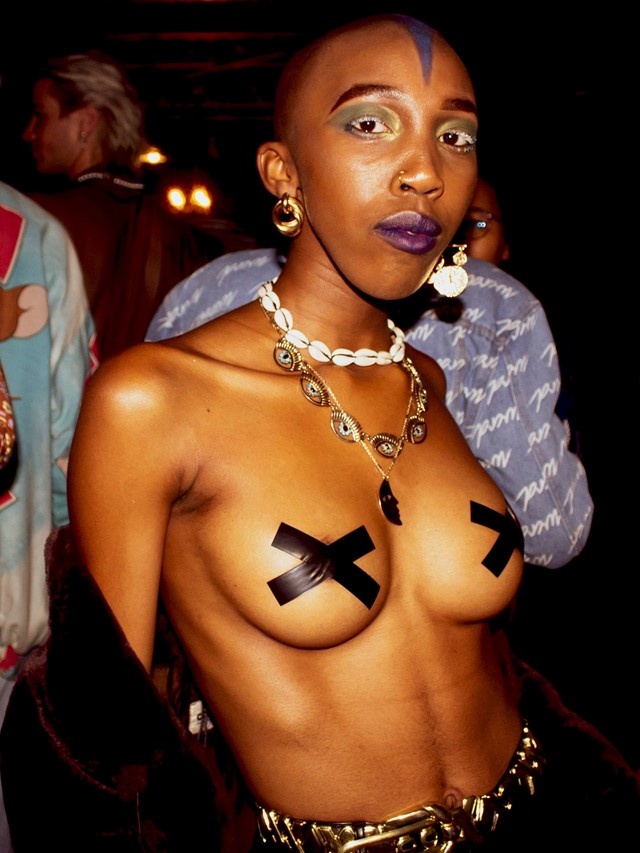
“Within a show that’s so layered, with the audio elements complimenting the strong visual art the process of collaboration has been major," he says. “But the truest sense of collaboration has come with the artists like Henry J Kamara publishing a special edition of his book Keep the Drums, Lose the Knife” – centred around a survivor’s led community-based organisation working to end female genital mutilation in Sierra Leone and the UK through music, drumming and chanting. Another highlight is the work of Professor Wrecks who, Prempeh tells us, is “a Chicago based digital artist collaborating with our team on an installation of their work. And with each and every one of the BEAUTIFUL artists that have given their time to be a part of this show by providing conversations and stories as a contribution to this meaningful exhibition.“
Inspired by and referencing the tradition of the 1950s Japanese listening bars, Prempeh tells Dazed: “We wanted to produce a rave exhibition that isn’t just poster prints and handwriting on the walls. We wanted to create a place of elevated comfort in the heart of busy Central London, so soft furnishings and meditative soundscapes fill the space. Exhibitions aren’t normally a place of comfort, and rave exhibitions aren’t normally a place to find fine art photographic prints. We’re interrupting narratives on every level with this show.”
"We want people to feel calm and comfortable in exploring the different and unexplored parts of life,” he says. “If we could all be a little more calm and comfortable, the world would change. If we can work to interrupt narratives and be comfortable with change, then truly the world would change. If we can be happy to listen rather than judge; if people that come to the exhibition take that away with themselves, then the world will nudge itself forward.”
